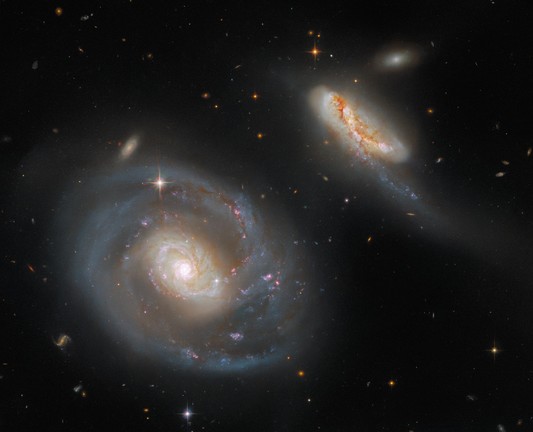Hubble image of Arp 283, also known as NGC 2798 and NGC 2799.
The left galaxy in this interacting pair, NGC 2799, is viewed edge-on. A bridge of star forming regions appears to connect it to its companion on the right, NGC 2798. NGC 2798 has two broad smooth spiral arms or tails without obvious clumps, made of mostly older, yellow stars.
Credit: ESA/Hubble & NASA, SDSS, J. Dalcanton, J. Schmidt
Source: https://esahubble.org/images/potw2042a/






















